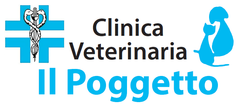Processionary
During spring, it unfortunately often happens in our surgeries that we have to deal with even serious damage to the tongue and the entire buccal mucosa of dogs that have licked or simply touched hairy caterpillars called 'PROCESSIONARY' with their muzzle.
The nests of these dangerous caterpillars are large white silky cocoons like cotton balls, similar in shape to flasks, the slender part of which can reach a diameter of 30-40 cm, hanging from the apexes of some conifers (mainly pines, but often also cypresses and firs) or near the forking of branches in oak trees.
These nests are built by the caterpillars of a nocturnal butterfly belonging to the Notodontidae, commonly known as the 'Processionary', due to the way their larvae proceed out of the nest. These very hairy caterpillars when they leave the nest, arrange themselves in single file, so that the head of one comes into contact with the abdomen of the one before it, thus reaching processions several metres long.
In our areas, there are the oak processionary moth (Thaumetopoea procession) and the pine processionary moth (Thaumetopoea pityocampa).
Our dogs are often intrigued by these caterpillars, but when they are unfortunate enough to brush the stinging hairs with their tongues, they immediately start to salivate (drool intensely), show great discomfort and sometimes begin to vomit. Even, if the caterpillar has been caught completely in the mouth, extensive 'burnt' areas may be noted.
If possible, the mouth and tongue should be rinsed immediately and thoroughly with cold running water to remove any residues of the stinging hairs still capable of continuing to irritate the mucous membrane.
The affected person must be taken immediately to the veterinary surgeon so that the most suitable treatment can be carried out quickly.
It must be said that, unfortunately, the damage that such caterpillars do to the tongue is sometimes very serious, so much so that large portions of the tongue may become necrotic and, in the following days, may fall off on their own or have to be treated surgically.
For people, too, such caterpillars can be dangerous: in fact, the damage caused by the penetration of the hairs into our skin can be modest or take on considerable severity when the hairs or fragments of them come into contact with the eye, the nasal mucosa, the mouth or, even worse, when they penetrate the respiratory and digestive tracts.
Prudence dictates that processionary caterpillars should never be touched, nor their nests opened. It is suggested, once sighted, move them away and remove the dog immediately from infested plants.
For more information and to book specialised consultations, call +39 055 473009 today
Clinica Veterinaria il Poggetto alerts all customers:
due to the Covid 19 health emergency, VISITS ARE CARRIED OUT BY APPOINTMENT ONLY
CLINICA VETERINARIA IL POGGETTO
CONTINUOUS OPENING HOURS: FROM MONDAY TO FRIDAY - 08:30 - 20:30
SATURDAY, SUNDAY AND HOLIDAYS 09:00-13:00 (by appointment)
Via Celso 2 - 50139 - Firenze (FI)
+39 055 473009 | info@ilpoggettovet.it
VAT Reg No. 04805460484 | Legal information | Privacy Policy and Cookie Policy





